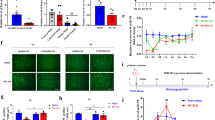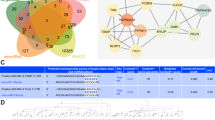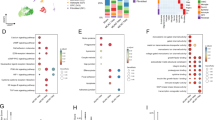Abstract
Current treatments for ischemic stroke aim to achieve rapid reperfusion with intravenous thrombolysis and/or endovascular thrombectomy, which have proven to attenuate disability. Despite the significant progress in reperfusion therapies, functional recovery remains inconsistent, primarily due to ongoing neuronal excitotoxicity and neuroinflammation. In this study we investigated the relationship between neuronal activity and neuroinflammation in an ischemic mouse model using chemogenetic techniques. MCAO cerebral ischemia model was established in mice; in vitro oxygen-glucose deprivation/reoxygenation (OGD/R) was established in PC12 neurons. By measuring c-Fos expression, we showed that MCAO caused the activation of both excitatory and inhibitory neurons within the M1 primary motor cortex, which subsequently induced reactive activation of local microglia through the secretion of unique neuronal extracellular vesicles (EVs). Chemogenetic inhibition of abnormal neuronal activity in stroke-affected cortical neurons reversed microglia activation and reduced neuronal apoptosis. By analyzing the miRNAs in EVs from the ischemic M1 cortex, we found that miR-128-3p was significantly downregulated in ischemia-challenged neurons and their EVs, leading to neuronal injury and proinflammatory polarization of microglia. Intravenous injection of miR-128-3p mimics significantly improved neuronal survival, reduced neuroinflammation accompanied by better functional recovery after ischemic stroke. In summary, stroke-induced abnormal neuronal activity reduces miR-128-3p levels in ischemic neurons and EVs, leading to increased microglia activation and neuronal injury after a stroke. The study highlights that inhibiting abnormal neuronal activity or delivering miR-128-3p-enriched EVs as novel methods for stroke treatment.

This is a preview of subscription content, access via your institution
Access options
Subscribe to this journal
Receive 12 print issues and online access
$259.00 per year
only $21.58 per issue
Buy this article
- Purchase on SpringerLink
- Instant access to full article PDF
Prices may be subject to local taxes which are calculated during checkout







Similar content being viewed by others
References
Collaborators GBDN. Global, regional, and national burden of neurological disorders, 1990-2016: a systematic analysis for the Global Burden of Disease Study 2016. Lancet Neurol. 2019;18:459–80.
Badhiwala JH, Nassiri F, Alhazzani W, Selim MH, Farrokhyar F, Spears J, et al. Endovascular thrombectomy for acute ischemic stroke: a meta-analysis. JAMA. 2015;314:1832–43.
Goyal M, Menon BK, van Zwam WH, Dippel DW, Mitchell PJ, Demchuk AM, et al. Endovascular thrombectomy after large-vessel ischaemic stroke: a meta-analysis of individual patient data from five randomised trials. Lancet. 2016;387:1723–31.
Marko M, Miksova D, Ebner J, Lang M, Serles W, Sommer P, et al. Temporal trends of functional outcome in patients with acute ischemic stroke treated with intravenous thrombolysis. Stroke. 2022;53:3329–37.
Tsao CW, Aday AW, Almarzooq ZI, Alonso A, Beaton AZ, Bittencourt MS, et al. Heart disease and stroke statistics-2022 update: a report from the American Heart Association. Circulation. 2022;145:e153–e639.
Liao LY, Zhu Y, Peng QY, Gao Q, Liu L, Wang QH, et al. Intermittent theta-burst stimulation for stroke: primary motor cortex versus cerebellar stimulation: a randomized sham-controlled trial. Stroke. 2024;55:156–65.
Luoma JI, Kelley BG, Mermelstein PG. Progesterone inhibition of voltage-gated calcium channels is a potential neuroprotective mechanism against excitotoxicity. Steroids. 2011;76:845–55.
Papazian I, Kyrargyri V, Evangelidou M, Voulgari-Kokota A, Probert L. Mesenchymal stem cell protection of neurons against glutamate excitotoxicity involves reduction of NMDA-triggered calcium responses and surface GluR1, and is partly mediated by TNF. Int J Mol Sci. 2018;19:651.
Gelderblom M, Leypoldt F, Steinbach K, Behrens D, Choe CU, Siler DA, et al. Temporal and spatial dynamics of cerebral immune cell accumulation in stroke. Stroke. 2009;40:1849–57.
Emmrich JV, Ejaz S, Neher JJ, Williamson DJ, Baron JC. Regional distribution of selective neuronal loss and microglial activation across the MCA territory after transient focal ischemia: quantitative versus semiquantitative systematic immunohistochemical assessment. J Cereb Blood Flow Metab. 2015;35:20–7.
Ma MW, Wang J, Zhang Q, Wang R, Dhandapani KM, Vadlamudi RK, et al. NADPH oxidase in brain injury and neurodegenerative disorders. Mol Neurodegener. 2017;12:7.
Zhou M, Wang CM, Yang WL, Wang P. Microglial CD14 activated by iNOS contributes to neuroinflammation in cerebral ischemia. Brain Res. 2013;1506:105–14.
Jiang D, Gong F, Ge X, Lv C, Huang C, Feng S, et al. Neuron-derived exosomes-transmitted miR-124-3p protect traumatically injured spinal cord by suppressing the activation of neurotoxic microglia and astrocytes. J Nanobiotechnology. 2020;18:105.
Peng H, Harvey BT, Richards CI, Nixon K. Neuron-derived extracellular vesicles modulate microglia activation and function. Biol (Basel). 2021;10:948.
Yin Z, Han Z, Hu T, Zhang S, Ge X, Huang S, et al. Neuron-derived exosomes with high miR-21-5p expression promoted polarization of M1 microglia in culture. Brain, Behav, Immun. 2020;83:270–82.
Xian X, Cai LL, Li Y, Wang RC, Xu YH, Chen YJ, et al. Neuron secrete exosomes containing miR-9-5p to promote polarization of M1 microglia in depression. J Nanobiotechnology. 2022;20:122.
Guo X, Qiu W, Li B, Qi Y, Wang S, Zhao R, et al. Hypoxia-induced neuronal activity in glioma patients polarizes microglia by potentiating RNA m6A demethylation. Clin Cancer Res. 2024;30:1160–74.
Atasoy D, Sternson SM. Chemogenetic tools for causal cellular and neuronal biology. Physiol Rev. 2018;98:391–418.
Sternson SM, Roth BL. Chemogenetic tools to interrogate brain functions. Annu Rev Neurosci. 2014;37:387–407.
Wang YC, Galeffi F, Wang W, Li X, Lu L, Sheng H, et al. Chemogenetics-mediated acute inhibition of excitatory neuronal activity improves stroke outcome. Exp Neurol. 2020;326:113206.
Cho J, Ryu S, Lee S, Kim J, Park JY, Kwon HS, et al. Clozapine-induced chemogenetic neuromodulation rescues post-stroke deficits after chronic capsular infarct. Transl Stroke Res. 2022;14:499–512.
Zhang X, Gong P, Zhao Y, Wan T, Yuan K, Xiong Y, et al. Endothelial caveolin-1 regulates cerebral thrombo-inflammation in acute ischemia/reperfusion injury. EBioMedicine. 2022;84:104275.
Benito E, Barco A. The neuronal activity-driven transcriptome. Mol Neurobiol. 2015;51:1071–88.
Tian X, Shen H, Li Z, Wang T, Wang S. Tumor-derived exosomes, myeloid-derived suppressor cells, and tumor microenvironment. J Hematol Oncol 2019;12:84.
Wang D, Chen F, Fang B, Zhang Z, Dong Y, Tong X, et al. MiR-128-3p alleviates spinal cord ischemia/reperfusion injury associated neuroinflammation and cellular apoptosis via SP1 suppression in rat. Front Neurosci. 2020;14:609613.
Zhang G, Chen L, Liu J, Jin Y, Lin Z, Du S, et al. HIF-1alpha/microRNA-128-3p axis protects hippocampal neurons from apoptosis via the Axin1-mediated Wnt/beta-catenin signaling pathway in Parkinson’s disease models. Aging. 2020;12:4067–81.
Bartel DP. MicroRNAs: target recognition and regulatory functions. Cell. 2009;136:215–33.
Sheedy FJ, Palsson-McDermott E, Hennessy EJ, Martin C, O’Leary JJ, Ruan Q, et al. Negative regulation of TLR4 via targeting of the proinflammatory tumor suppressor PDCD4 by the microRNA miR-21. Nat Immunol. 2010;11:141–7.
Matsuhashi S, Manirujjaman M, Hamajima H, Ozaki I. Control mechanisms of the tumor suppressor PDCD4: expression and functions. Int J Mol Sci. 2019;20:2304.
Roque C, Pinto N, Vaz Patto M, Baltazar G. Astrocytes contribute to the neuronal recovery promoted by high-frequency repetitive magnetic stimulation in in vitro models of ischemia. J Neurosci Res. 2021;99:1414–32.
Gava-Junior G, Ferreira SA, Roque C, Mendes-Oliveira J, Serrenho I, Pinto N, et al. High-frequency repetitive magnetic stimulation rescues ischemia-injured neurons through modulation of glial-derived neurotrophic factor present in the astrocyte’s secretome. J Neurochem. 2023;164:813–28.
Lefaucheur JP, Aleman A, Baeken C, Benninger DH, Brunelin J, Di Lazzaro V, et al. Evidence-based guidelines on the therapeutic use of repetitive transcranial magnetic stimulation (rTMS): An update (2014-2018). Clin Neurophysiol: J Int Federation Clin Neurophysiol. 2020;131:474–528.
Hu KH, Li YA, Jia W, Wu GY, Sun L, Wang SR, et al. Chemogenetic activation of glutamatergic neurons in the motor cortex promotes functional recovery after ischemic stroke in rats. Behav Brain Res. 2019;359:81–8.
Anastacio JBR, Sanches EF, Nicola F, Odorcyk F, Fabres RB, Netto CA. Phytoestrogen coumestrol attenuates brain mitochondrial dysfunction and long-term cognitive deficits following neonatal hypoxia-ischemia. Int J Dev Neurosci. 2019;79:86–95.
Tan CL, Plotkin JL, Veno MT, von Schimmelmann M, Feinberg P, Mann S, et al. MicroRNA-128 governs neuronal excitability and motor behavior in mice. Science. 2013;342:1254–8.
Hawley ZCE, Campos-Melo D, Droppelmann CA, Strong MJ. MotomiRs: miRNAs in motor neuron function and disease. Front Mol Neurosci. 2017;10:127.
McSweeney KM, Gussow AB, Bradrick SS, Dugger SA, Gelfman S, Wang Q, et al. Inhibition of microRNA 128 promotes excitability of cultured cortical neuronal networks. Genome Res. 2016;26:1411–6.
Wang C, Li L. The critical role of KLF4 in regulating the activation of A1/A2 reactive astrocytes following ischemic stroke. J Neuroinflammation. 2023;20:44.
Cheng Z, Zou X, Jin Y, Gao S, Lv J, Li B, et al. The role of KLF(4) in Alzheimer’s disease. Front Cell Neurosci. 2018;12:325.
Choi H, Roh J. Role of Klf4 in the regulation of apoptosis and cell cycle in rat granulosa cells during the periovulatory period. Int J Mol Sci. 2018;20:87.
Kaushik DK, Gupta M, Das S, Basu A. Kruppel-like factor 4, a novel transcription factor regulates microglial activation and subsequent neuroinflammation. J Neuroinflammation. 2010;7:68.
Kaushik DK, Thounaojam MC, Kumawat KL, Gupta M, Basu A. Interleukin-1beta orchestrates underlying inflammatory responses in microglia via Kruppel-like factor 4. J Neurochem. 2013;127:233–44.
Choi H, Choi K, Kim DH, Oh BK, Yim H, Jo S, et al. Strategies for targeted delivery of exosomes to the brain: advantages and challenges. Pharmaceutics. 2022;14:672.
Lino MM, Simoes S, Tomatis F, Albino I, Barrera A, Vivien D, et al. Engineered extracellular vesicles as brain therapeutics. J Control Release. 2021;338:472–85.
Webb RL, Kaiser EE, Scoville SL, Thompson TA, Fatima S, Pandya C, et al. Human neural stem cell extracellular vesicles improve tissue and functional recovery in the murine thromboembolic stroke model. Transl Stroke Res. 2018;9:530–9.
Acknowledgements
Research funding support for this work was from the National Natural Science Foundation of China (82271327, 82072535 and 81873768) to Zhen Wang and Natural Science Foundation of Shandong Provine (ZR2024MH038) to Zhen Wang. We are grateful with the National Natural Science Foundation of China under Grant (No. U23A6011) to Dr. Wen-qiang Chen for providing us with financial support. We are grateful to Dr. Yan Li (the First Affiliated Hospital of Shandong First Medical University and Shandong Provincial Qianfoshan Hospital) for the action potential assay. We thank the Translational Medicine Center of Shandong University for the advice and instruments provided for our research. The graphical abstract was created with BioRender.com.
Author information
Authors and Affiliations
Contributions
ZW led the project, such as, in concepts, designing, supervising, funding and writing and revising of the manuscript; TTL made substantial contributions to laboratory work and the analysis of data; XFG provided the experiment ideas and revised the manuscript; YJZ performed cell culture; DQX performed Ca2+ image and electrophysiology; YHC and YS took part in behavioral testing; DXL supervised this project and revised the manuscript. All authors have read and approved the final manuscript.
Corresponding author
Ethics declarations
Competing interests
The authors declare no competing interests.
Additional information
Publisher’s note Springer Nature remains neutral with regard to jurisdictional claims in published maps and institutional affiliations.
Rights and permissions
Springer Nature or its licensor (e.g. a society or other partner) holds exclusive rights to this article under a publishing agreement with the author(s) or other rightsholder(s); author self-archiving of the accepted manuscript version of this article is solely governed by the terms of such publishing agreement and applicable law.
About this article
Cite this article
Li, Tt., Guo, Xf., Zhao, Yj. et al. Aberrant neuronal excitation promotes neuroinflammation in the primary motor cortex of ischemic stroke mice. Acta Pharmacol Sin 46, 2105–2119 (2025). https://doi.org/10.1038/s41401-025-01518-6
Received:
Accepted:
Published:
Issue date:
DOI: https://doi.org/10.1038/s41401-025-01518-6
Keywords
This article is cited by
-
Cutting-edge technologies in neural regeneration
Cell Regeneration (2025)



